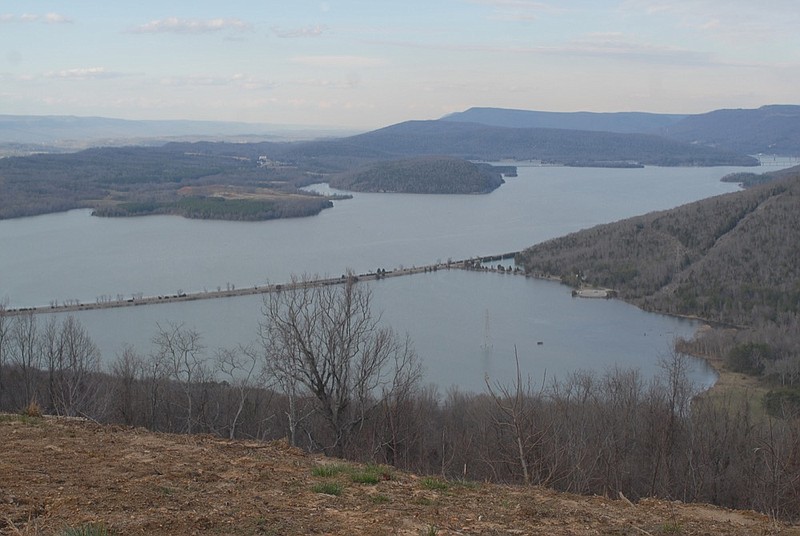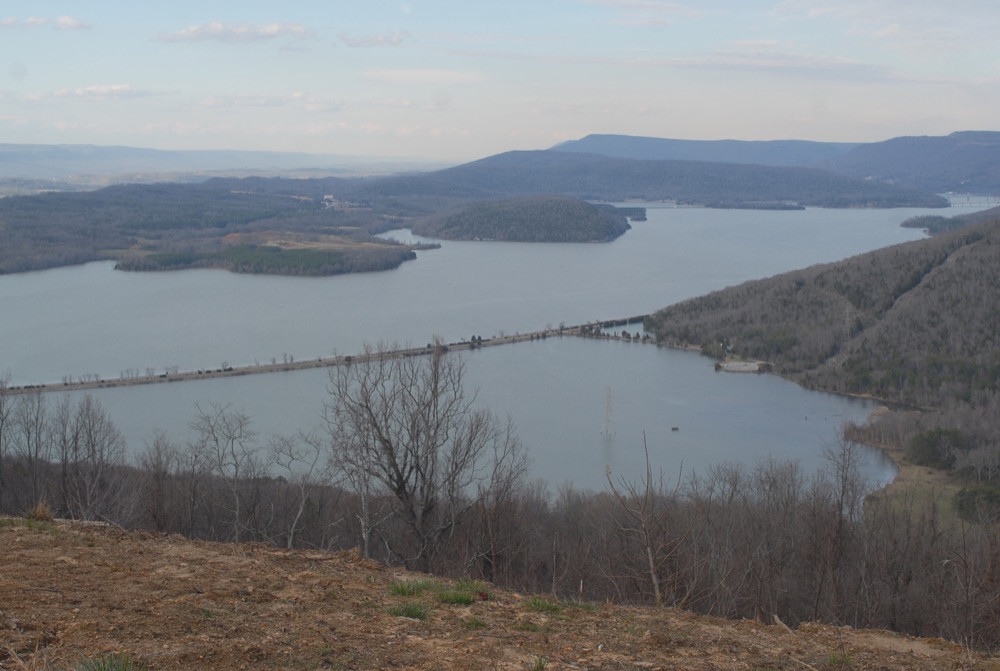An energy development company that is developing plans for pumped storage hydroelectric facilities in Pennsylvania and Virginia is proposing to build a similar 80-megawatt plant in Dade County, Georgia, near the Nickajack Reservoir.
Renewable Energy Aggregators, a Doylestown, Pennsylvania-based company started five years ago to develop renewable energy projects, has filed for a preliminary permit application to pursue plans to build an 84-acre lake atop one of the mountaintop ridges in Dade County near where Georgia, Alabama and Tennessee meet.
The proposed Freestone Pumped Storage Hydro Project would be a smaller version of TVA's Raccoon Mountain Pumped Storage facility just west of Chattanooga nearly 20 miles upstream on the Tennessee River.
But unlike Raccoon Mountain, which drains into the river below, the developers of the Dade County project envision a closed-loop facility that would involve construction of a 31.4-acre lower reservoir where water would drain into from the upper reservoir to produce electricity by a pair of hydro generating units during peak demand periods. Similar to other projects Renewable Energy Aggregators is developing in Bucks County, Pennsylvania, and Buchanan County, Virginia, the Dade County project could use an abandoned coal mine for part of the facility.
Pumped storage facilities work like a giant storage battery. Water is pumped from a lower reservoir to one uphill at night or during periods of surplus electricity generation, when power prices typically drop. During peak demand periods, usually in morning or afternoon hours when prices rise, gates open to send the water back downhill to the lower reservoir, engaging turbines to create energy.
Such storage capacity is expected to be more in demand as distributed energy generated from solar and wind turbines increases over time, producing surplus power when the sun shines and the wind blows and less power when such renewable energy is not available.
"The proposed project will fulfill the public interest for a less expensive, more reliable and environmentally sound source of renewable energy while creating energy jobs in an economically depressed area which has lost energy-related jobs in the transition away from coal," Renewable Energy Aggregators said in its preliminary permit filing with the Federal Energy Regulatory Commission. "It will provide a means to store excess energy, especially from intermittent renewable sources such as wind farms, at times when demand is low and large thermal plants cannot shed load."
The upper reservoir in the proposed Dade County project would be created by the construction of a semi-circular dam to create a lake capable of holding more than 410.4 million gallons of water. The application indicates that the net head - a measurement of the height of the upper water body above the lower reservoir - would be 839 feet.
The developers estimate the facility should generate nearly 351,482 megawatt hours of electricity a year.
Adam Rouselle II, a founder and director of Renewable Energy Aggregators, declined Sunday to discuss any details of the company's plans beyond what was disclosed in its filing with the regulatory commission. But the application for the project suggests that the proposed facility would curb carbon emissions linked with global warming and provide needed peak power generation to help level the power load in Georgia.
"Development of the proposed project would reduce acid rain and greenhouse effects associated with coal- and oil-fueled power plants that currently supply a significant portion of the energy needs of Georgia," the company's permit said.
According to the National Hydropower Association, pumped storage today makes up 97 percent of utility-scale energy storage in the United States at 42 sites with a total of 23 gigawatts of capacity. The Federal Energy Regulatory Commission also has issued preliminary permits for 28 new pumped storage facilities across the country.
In the Tennessee Valley, the only existing pumped storage facility is atop Raccoon Mountain just west of Chattanooga, which was completed in 1978 at a cost of $310 million. The Raccoon Mountain facility includes a 523-acre lake atop the mountain capable of storing 107 billion gallons of water. Its four generating units can produce up to 1,652 megawatts of power when in full operation, or nearly as much power as the Sequoyah Nuclear Power Plant, for short periods.
TVA, which oversees the flow of the Tennessee River and its tributaries, would have to permit water intakes from the Nickajack Reservoir if Renewable Energy Aggregators taps into the Nickajack Reservoir for its water supply. But as a closed-loop system, the Freestone Pumped Storage Facility in Dade County may not have to use the Tennessee River for its water supply, relying instead on runoff and underground supplies.
TVA spokesman Scott Fiedler said TVA has not been approached yet about the Renewable Energy Aggregators' project, although the agency might be required to either supply water from the river or transmit power generated by the facility since it is within TVA's 7-state service territory.
The proposed project from Renewable Energy Aggregators is still very preliminary and will require a number of studies and approvals before construction could begin. The initial 18-page preliminary application to FERC, if approved, would give the applicant three years to study the site and to determine if the project will go forward or not.
"If the preliminary application is approved, it would give the applicant priority over the site for the 3-year time frame but there is not approval for any construction [with such a preliminary permit]," FERC spokeswoman Celeste Miller said. "If the applicant decides to try to move ahead with the project, a license application would be filed [to FERC] for a separate and more detailed process of review and study."
In May, FERC began a 60-day public comment period on the preliminary permit application (P-14967-000) from Renewable Energy Aggregators. Persons may file comments online, by mail to FERC at 888 First Street, NE, Washington, D.C. 20426, or by calling toll-free at 1-866-206-3676.
"Once the comment period ends, we will review all of the comments as well as the application and we will make a determination whether or not to issue a permit," Miller said.
Contact Dave Flessner at dflessner@timesfreepress.com or 423-757-6340.

